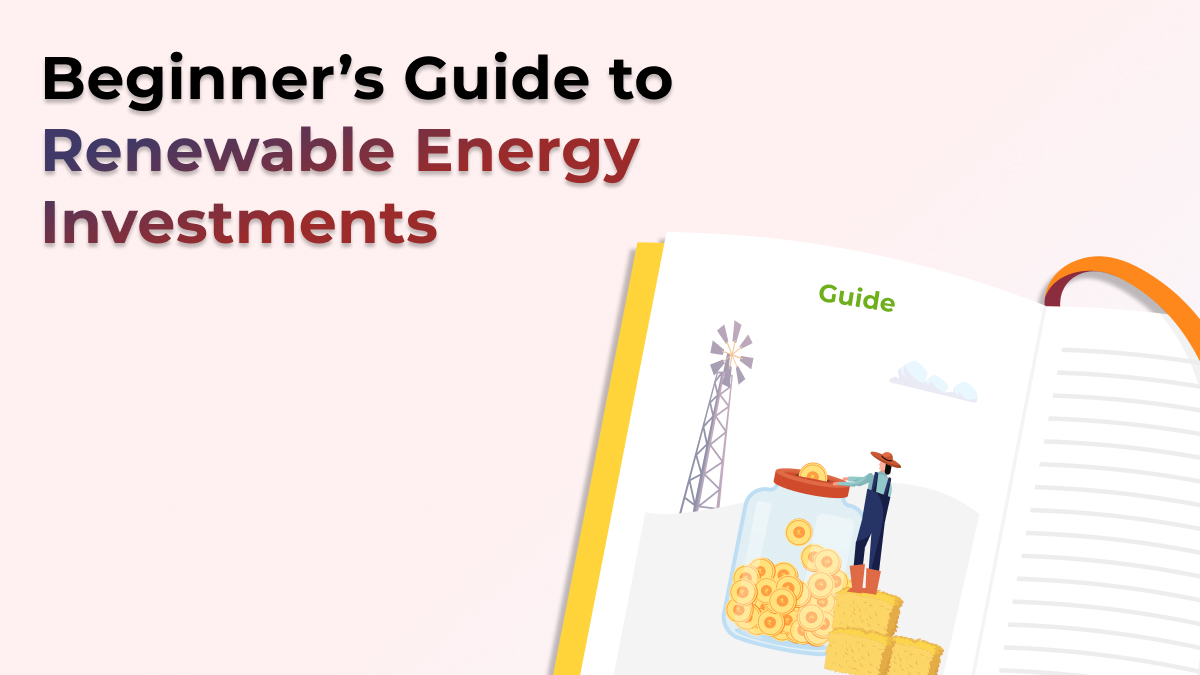Renewable energy helps us protect the environment and offers good investment opportunities. Unlike fossil fuels, renewable sources like solar and wind are clean and won’t run out.
What is Renewable Energy?
Renewable energy comes from sources that are naturally replenished, such as sunlight, wind, and water. These sources provide a continuous supply of energy.
Types of Renewable Energy
1. Solar Energy: Uses sunlight to produce electricity or heat.
2. Wind Energy: Uses wind turbines to generate electricity.
3. Hydroelectric Power: Uses flowing water from dams or rivers to make electricity.
4. Biomass: Uses organic materials like plant and animal waste to create energy.
5. Geothermal Energy: Uses heat from inside the Earth for power or heating.
6. Tidal and Wave Energy: Uses ocean tides and waves to produce energy.
Benefits
– Environmental: Reduces pollution and greenhouse gases.
– Economic: Creates jobs and can lower energy costs.
– Social: Supports local communities and fosters public support.
Why Invest in Renewable Energy?
Economic Opportunities
– Job Creation: New jobs are created in manufacturing, installation, and maintenance.
– Market Growth: The demand for clean energy is growing, offering potential for good returns.
– Cost-Effectiveness: Renewable energy is becoming cheaper compared to traditional fuels.
Environmental Benefits
– Less Pollution: Produces little to no greenhouse gases.
– Sustainable: Uses resources that won’t run out.
– Cleaner Air: Improves air quality by reducing pollution.
Policy Support
– Financial Incentives: Governments often provide tax breaks and subsidies to encourage investment.
– Supportive Regulations: Policies are generally favorable for renewable energy projects.
Types of Renewable Energy Investments
1. Solar Energy
– Residential: Install solar panels on your home to save on energy bills.
– Commercial: Businesses can set up solar systems to cut costs and be greener.
2. Wind Energy
– Wind Farms: Invest in large wind farms that produce electricity for communities.
– Individual Turbines: Set up small wind turbines on your property.
3. Hydroelectric Power
– Dams: Support big projects that use dams to create electricity.
– Small Hydro: Invest in smaller projects that use small rivers for local energy.
4. Other Technologies
– Geothermal: Use geothermal systems for efficient heating and cooling.
– Biomass: Fund facilities that turn waste into energy.
Things to Consider Before Investing
1. Costs and Returns
– Initial Investment: Know how much money you need to start.
– Returns: Estimate how much money you might earn from your investment.
2. Rules and Regulations
– Understand the Laws: Learn about regulations that could affect your investment.
– Policy Changes: Be aware of any possible changes in government policies.
3. Technology and Innovations
– Stay Updated: Keep track of new technologies and improvements.
– Innovation: Consider how new tech might impact your investment.
4. Market Trends and Risks
– Economic Trends: Watch for changes in the market that might affect your investment.
– Investment Risks: Evaluate the safety and potential ups and downs of your investment.
5. Goals and Risk Tolerance
– Set Goals: Decide what you want to achieve with your investment.
– Risk Comfort: Understand your comfort level with potential risks.
6. Liquidity and Exit Strategy
– Access Your Money: Consider how easy it is to get your money back if needed.
– Exit Plan: Have a strategy for selling your investment if things change.
7. Diversification
– Spread Your Investments: Invest in different types of renewable energy to reduce risk.
How to Invest in Renewable Energy
1. Buy Stocks
– Purchase shares in companies that focus on renewable energy.
2. Invest in Funds
– Invest in mutual funds or ETFs that focus on renewable energy companies.
3. Support Projects
– Use crowdfunding or join community solar projects to invest locally.
4. Green Bonds
– Buy bonds that fund renewable energy projects.
5. Infrastructure Funds
– Invest in funds that support large renewable energy projects like wind farms.
Risks and Challenges
1. Market Changes
– Diversify: Spread your investments to manage risk.
– Secure Prices: Lock in prices with long-term contracts.
– Monitor Trends: Use tools to predict market changes.
2. Regulatory Changes
– Stay Informed: Keep up with policy updates.
– Compliance: Ensure your investments meet regulations.
– Plan Ahead: Be prepared for possible regulatory shifts.
3. Technology Risks
– Pilot Testing: Test new technologies before full-scale use.
– Collaborate: Work with experts to manage risks.
– Assess Risks: Evaluate potential issues at each project stage.
Examples of Successful Projects
1. SolarCity (Tesla Energy)
– Project: Made solar panels more affordable with innovative financing.
– Key Factor: Effective financial models and large-scale production.
2. Cape Wind
– Project: Planned the first major U.S. offshore wind farm.
– Key Factor: Overcame regulatory challenges with strong community support.
3. Gemasolar Plant
– Project: Uses molten salt to provide solar power even at night.
– Key Factor: Advanced technology and government support.
Lessons from Top Investors
1. Warren Buffett
– Lesson: Invest in efficient and steady renewable projects.
– Example: Successful investments in wind and solar.
2. Elon Musk
– Lesson: Combine renewable energy with innovative storage solutions.
– Example: Tesla Powerwall for home energy storage.
3. Goldman Sachs
– Lesson: Diversify investments across different renewable sources.
– Example: Global investments in solar and wind projects.
Key Takeaways
– Explore Financing Options: Look into various financial models for renewable energy.
– Utilize Government Support: Take advantage of available subsidies and incentives.
– Leverage Technology: Use new technologies and storage solutions for better returns.
Getting Started
1. Research
– Learn about renewable energy markets and investment options.
2. Consult Experts
– Seek advice from financial advisors who specialize in renewable energy.
3. Set Goals
– Define your investment goals and risk tolerance.
Conclusion
Investing in renewable energy is both a smart financial choice and a way to help the environment. By learning about the market, consulting experts, and setting clear goals, you can start making a positive impact and achieving long-term success.
Ready to invest in renewable energy? Research opportunities, consult with experts, and start making a difference today!
